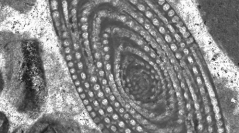

 Comptes Rendus Palevol
18 (8) - Pages 949-966
Comptes Rendus Palevol
18 (8) - Pages 949-966Larger benthic foraminifera (LBF) are significant proxies in biostratigraphy and also act as excellent indicators of shallow-marine carbonate environments in fossil series. The Palaeogene LBF recorded from Meghalaya, NE India (eastern part of the relic eastern Tethys/Neo-Tethys) have high potential for dating shallow-marine sediments and documenting the multiple episodes of carbonate sedimentation that have contributed to the development of the Sylhet Limestone Group. Early Eocene witnessed the proliferation of LBF species worldwide, the phenomenon better known as the Larger Foraminiferal Turnover (LFT). Genera like Alveolina, Nummulites and Orbitolites with broad species complexes thrived as the dominant LBF amidst numerous other taxa on the verge of extinction or only surviving as stable forms. The current study emphasizes on the biostratigraphic and palaeoenvironmental account of the early Eocene Umlatdoh Limestone successions outcropping in the Jaintia Hills of Meghalaya, primarily based on the recorded species of Alveolina and other larger benthic foraminifera. Five species of Alveolina — A. oblonga, A. schwageri, A . cf. ruetimeyeri, A. aff. haymanensis and A. aff. varians are recorded in the evaluated sections that indicate an early Eocene age corresponding to the Shallow Benthic Zone 10. Major carbonate facies types in the present assessment include oolitic-smaller benthic foraminiferal -green algal grainstone–packstone, smaller miliolid-Alveolina grainstone, green algal-benthic foraminiferal grainstone, larger porcellaneous (Alveolina) grainstone-packstone, Alveolina-nummulitid grainstone-rudstone, and nummulitid grainstone-rudstone, which indicate a shallow marine, high-energy depositional environment ranging from shoal-sandy bars to a distal inner ramp setting.
Ypresian, Umlatdoh Limestone, larger benthic foraminifera, calcareous algae, biostratigraphy, palaeoecology